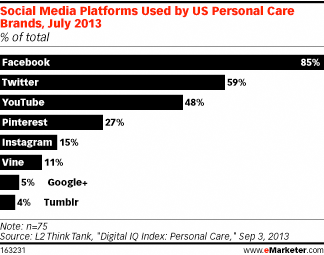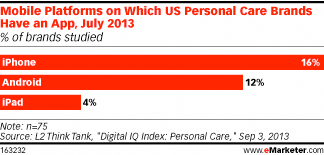Personal Care Brands slow to take advantage of Digital Opportunities
September 11, 2013
![]() Among consumer packaged goods (CPG) categories, personal care brands have been among the slowest to capitalize on the advantages offered by digital media. Further, a lackadaisical attitude among brands towards digital upkeep may have a damaging effect. A July 2013 study from L2 Think Tank found that a significant minority of US personal care brands failed to maintain their website—more than one-third had faulty content links, while almost one-fifth had broken ecommerce links.
Among consumer packaged goods (CPG) categories, personal care brands have been among the slowest to capitalize on the advantages offered by digital media. Further, a lackadaisical attitude among brands towards digital upkeep may have a damaging effect. A July 2013 study from L2 Think Tank found that a significant minority of US personal care brands failed to maintain their website—more than one-third had faulty content links, while almost one-fifth had broken ecommerce links.

The number of sites that offered coupons online was also relatively small. Only 33% of sites offered printable coupons, while 24% sent customers to a parent site for such discounts. And only one in five studied sites asked customers to share an email address before releasing a coupon.

While 85% of personal care brands had a presence on Facebook, attention to other social networks was not evident. Almost six in 10 were on Twitter, while just under half had an active YouTube channel. However, researchers found that personal care brands had largely limited their use of the video platform to archiving existing videos such as television commercials.

Personal care brands have also been lax about connecting disparate elements of their online presences. Only one-third of the brands L2 Think Tank looked at linked their websites to social media campaigns.
Mobile apps fared even more poorly than other digital strategies among personal care companies, with only 16% of brands adopting them for the iPhone, and 12% for Android. Brands had an even lower rate of adoption of mobile apps on iPads, at 4%.
Personal care brands should be especially attentive to the potential of mobile commerce, which seems to have gotten short shrift thus far.
Courtesy of eMarketer































